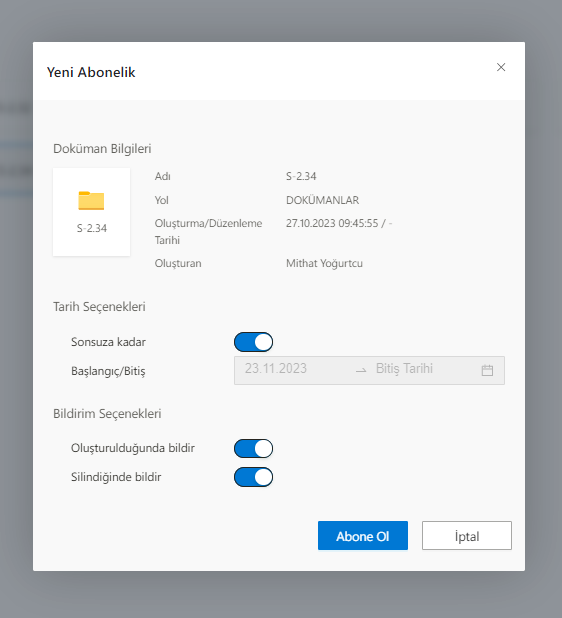Folder
Folders are the filing and directory structure in which files or different folders are located in a certain order. In case of requesting to perform operations on a folder, hover over the folder and select the round seçim field that appears on the right side of the folder in order to view the relevant operations, or the operations that can be performed on the folder are displayed in the pencerede_ opened by clicking _sağ. At the same time, if it is desired to make changes on more than one folder; The round selection fields on the right side of the folders to be selected are marked and more than one folder is selected. Actions that can be performed in bulk are filtered by selections, and changes are made from the actions area or from the right-click window.
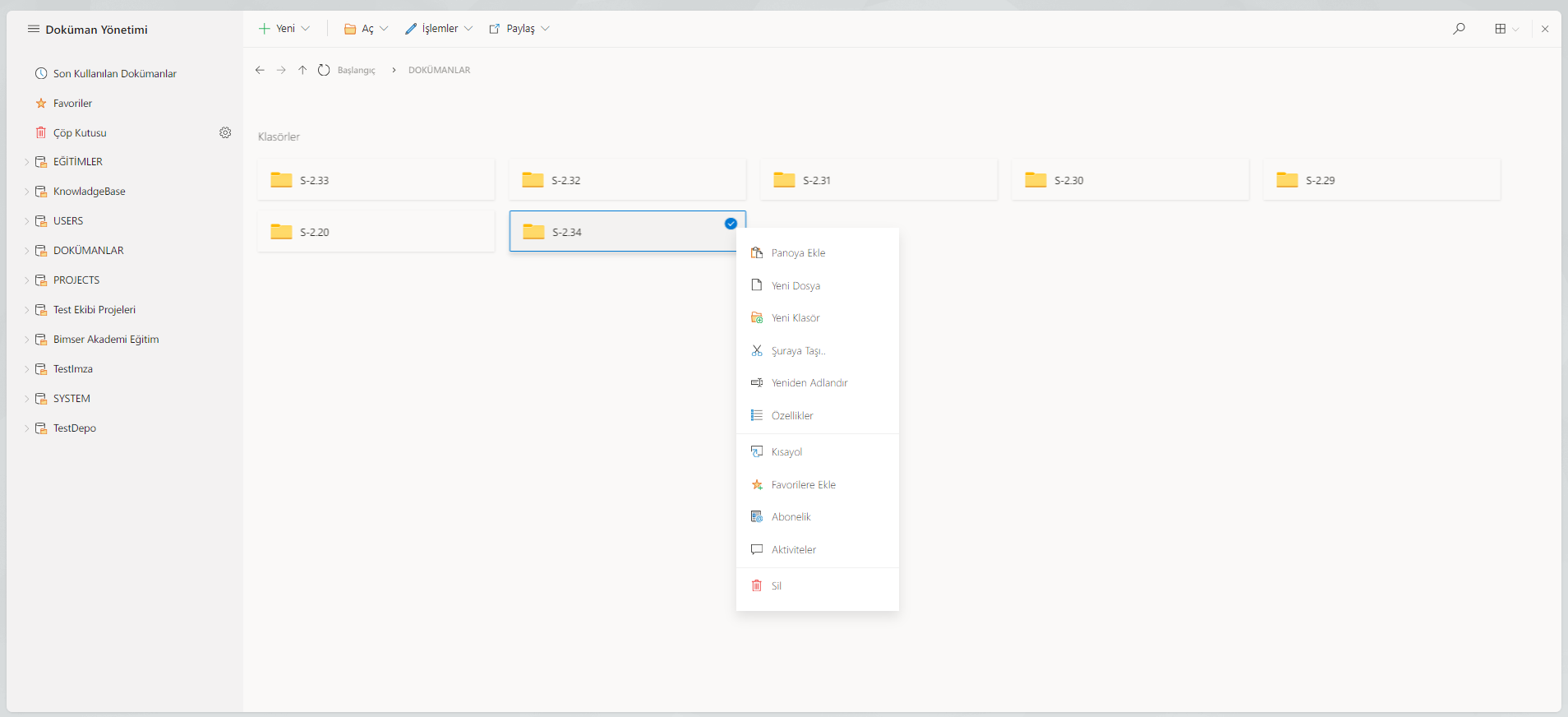
-New:
- New Folder: Allows you to create a new folder. The Name and Description of the Folder to be created in the window that opens can be defined specifically for each of the languages available in the system.
- New File: Allows you to create a new file on the folder. To add new files, you can choose from the Browse section on the window that opens, or the files you want to upload can be dragged and dropped onto this window. The Files to Upload section lists the files that the user wants to add. Clicking OK completes the file attachment process.
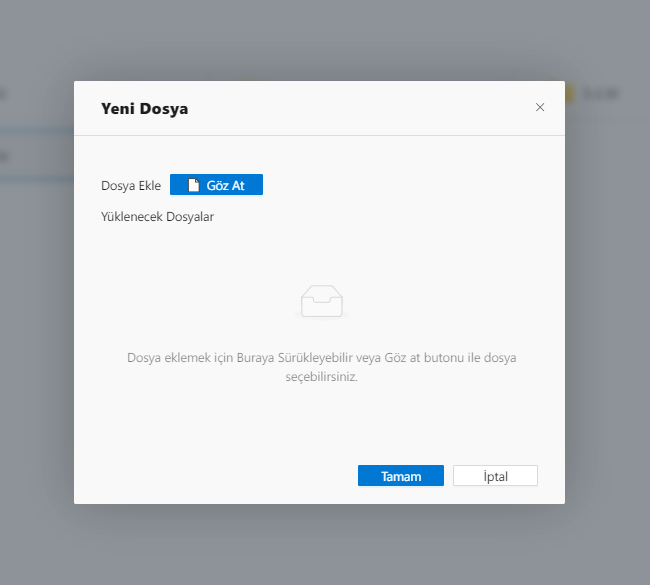
- New File: Allows you to create a new file on the folder. To add new files, you can choose from the Browse section on the window that opens, or the files you want to upload can be dragged and dropped onto this window. The Files to Upload section lists the files that the user wants to add. Clicking OK completes the file attachment process.
-Hungry:
- **Properties**: Folder properties are grouped under the headings of _Genel, Metadata, Directory Settings, New Dosya_. Property definitions related to the relevant folder are made through this panel.
- **General**: **Tags** of the relevant Folder can be defined and the objects in the desired tag can be filtered and searched through these tags. Filtering by tag is available in the table view.
- **Allowed File Types**: Files that can be added to the relevant folder can be limited by selecting from the files of the listed types.
- **Maximum File Size**: This is the area where the maximum file size is set for each of the files to be added to the folder.
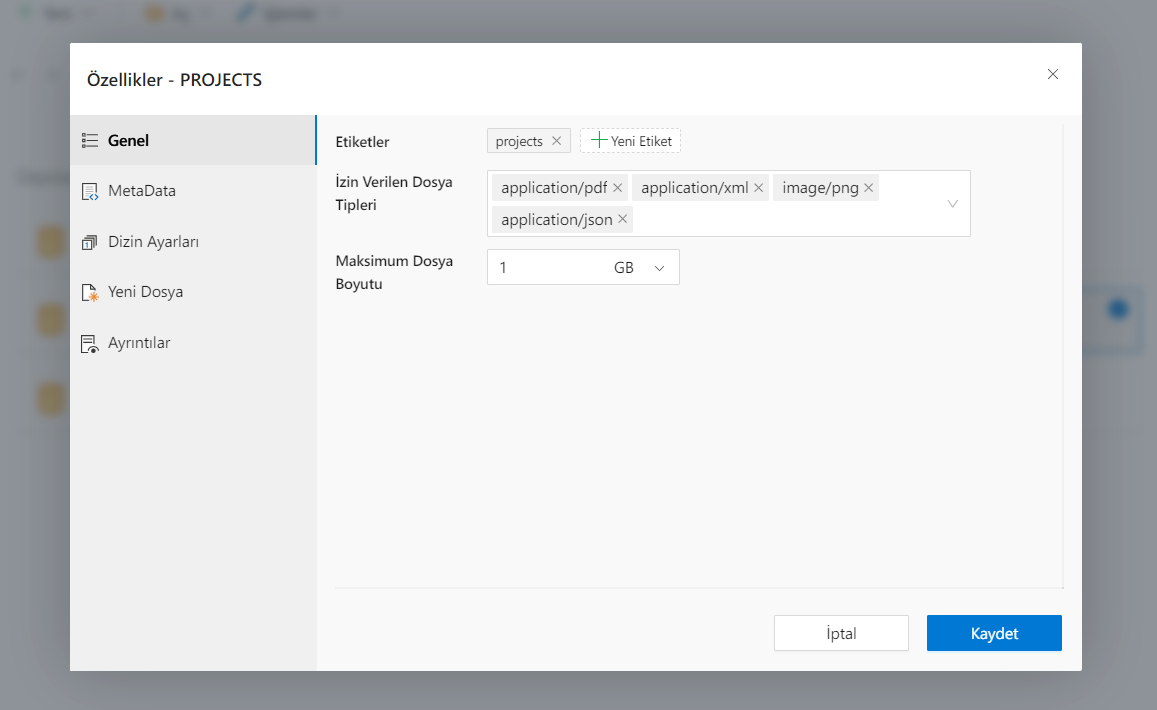
- Metadata: This is the field where the desired profile form is defined when any folder or file is to be added to the selected folder.
- **Get from Parent Directory**: If there is a profile form defined in a folder or repository in the parent directory of the selected folder, this field must remain active if this form must also be defined when adding files or folders to the subdirectory. It is active by default. If the profile form in the parent directory is not desired to be used in the subdirectory, it should be disabled in this field.
- **Profiles**: This is the area where a profile form is added by clicking the **+** button in the table. After the project selection is made, one of the Metadata-type forms in the relevant project is selected. If it will be mandatory to fill out a profile form, the **Required** field is activated. When adding to the file, folder or both objects from the **Type** field is provided, the profile form is opened.
- **Fields**: This is the field where it is selected which of the fields in the selected Form will be created as a column in the table view of the relevant folder.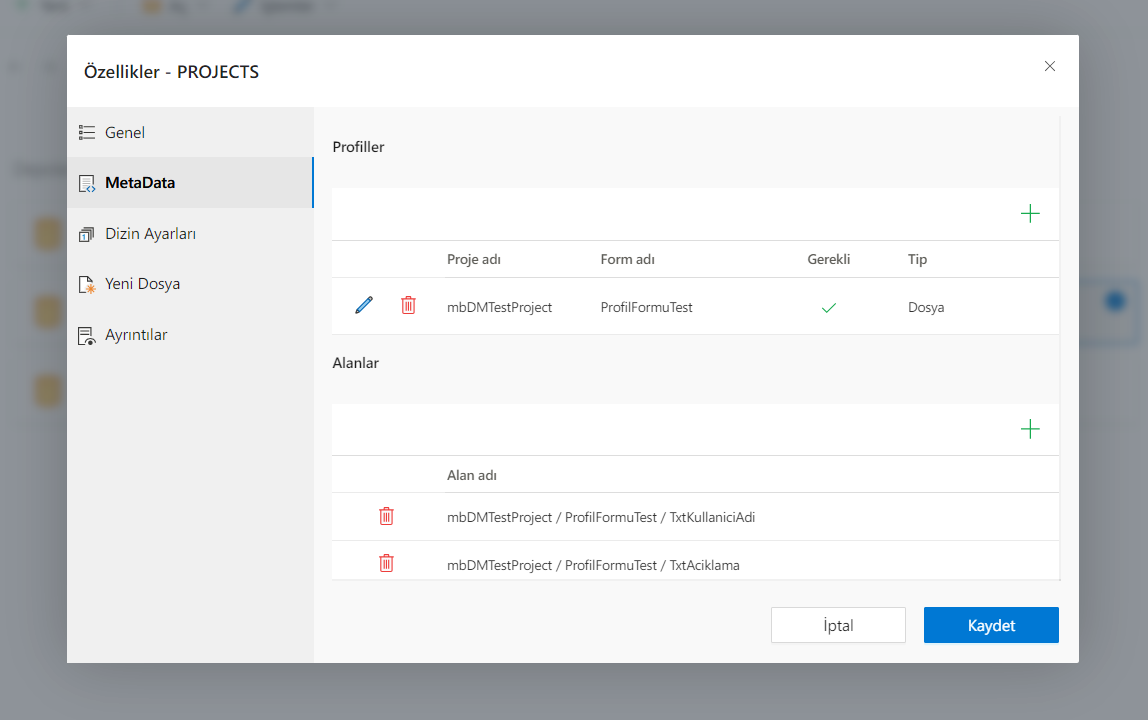 When a file is wanted to be added to the folder, the added file is selected and saved by filling out the profile form determined from the MetaData field.
When a file is wanted to be added to the folder, the added file is selected and saved by filling out the profile form determined from the MetaData field.

The fields selected in the profile form will be visible in the Table View mode of the folder where the profile form is added. In this way, profile form fields added to folders or files can be viewed and filtering can be done through these fields. 
Directory Settings: Csp Document Management allows you to make OCR on your files. By making adjustments from the Directory Settings menu of your repository or folder, you can get the content of the files you upload in plain text and save them to the system. Then you can perform a search operation all text from the Document Management search screen. By searching for a single phrase in your file, you can access all the files in which the relevant phrase appears. From the directory settings menu, first of all, you need to uncheck the Get from Parent Directory box, if any. (We'll talk about what the Get from Parent Directory sign is at the end of the page.) From the "File Type" section, you must select which file types you want to search all text. From the processor configuration, you must choose which processor (OCR engine) you want to use. Then click the Ok button. You can enter more than one record. Note: OCR Engine configuration requires installation and DB configurations. Along with the OCR process, automatic artificial intelligence-supported categorization is also performed on the uploaded files. Note: By default, your actions on the Metadata and Directory Settings menus also apply to subdirectories. Thanks to "Get from Parent Index", you don't need to bother to make these adjustments again in subdirectories. If you want to make different settings in subdirectories, just uncheck the "Get from Parent Directory" box.
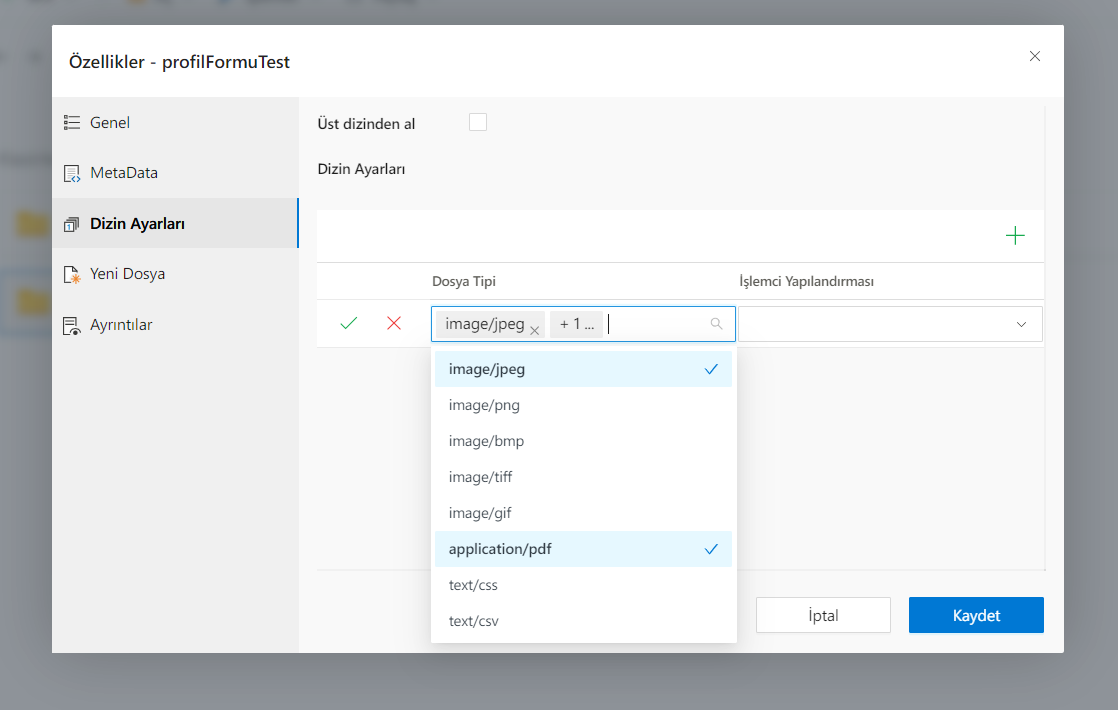
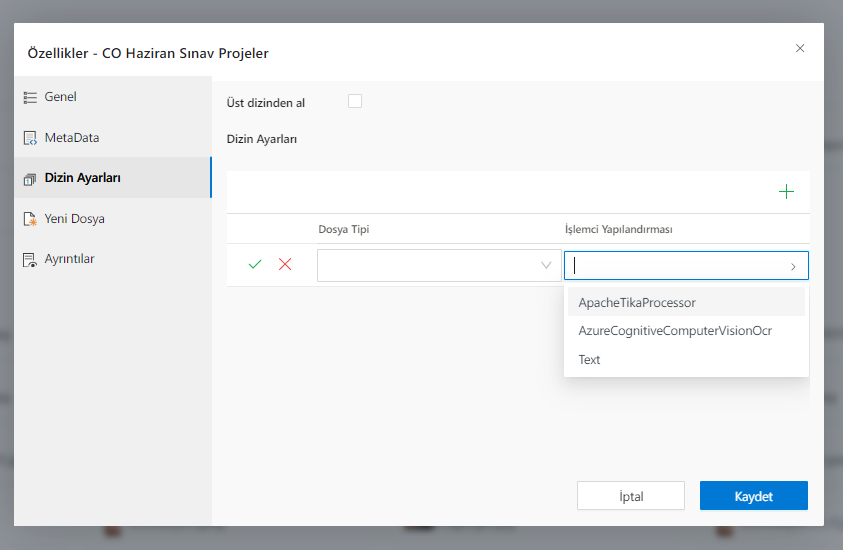
- **New File**: This is the area where a process is defined that should start automatically when a new file is added to the Repository. If Project and Flow are selected, the selected flow will start automatically when the file is added. Note: Your feed must have the following variables.
'''StartedFrom (string), CreatedFileId (long), CreatedFilePath (string)'''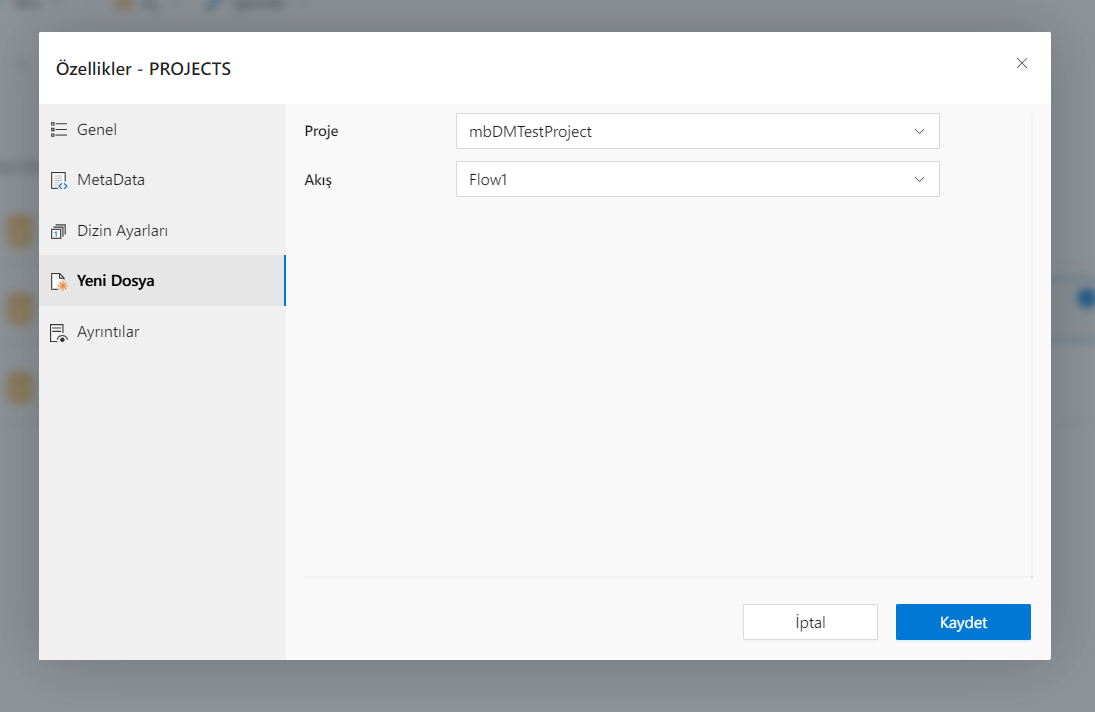
Details: This is the field where the number of files, folders, and content in the folder is presented. When the Calculate button is clicked, the total size of the folder is calculated.
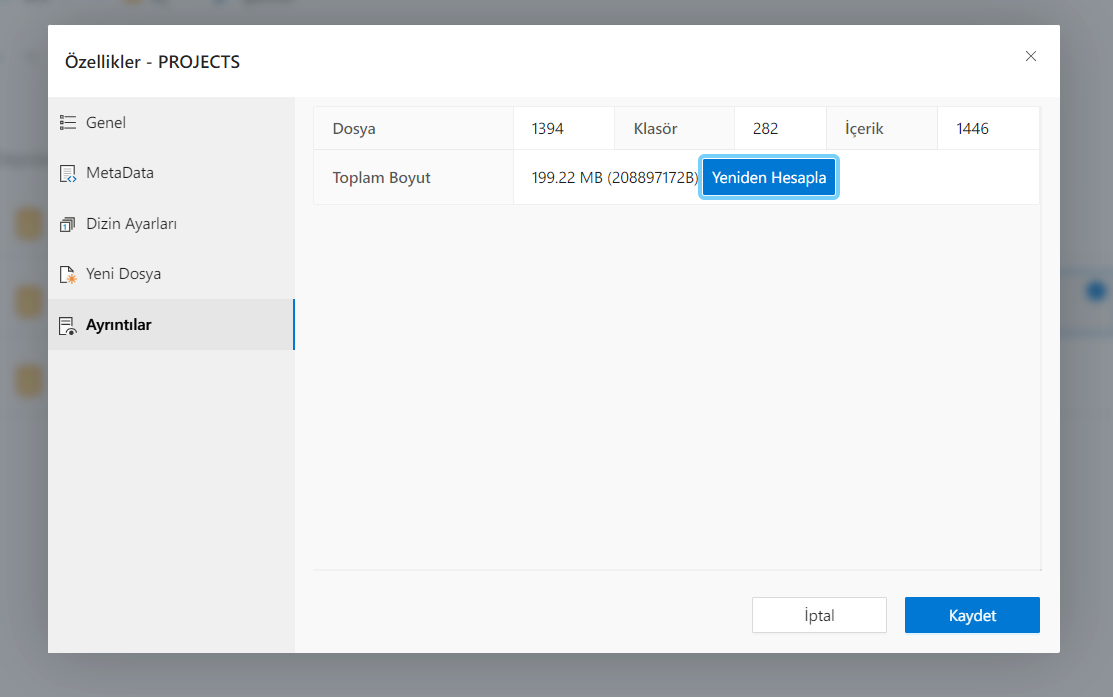
Security: It is a security tab that allows people within the organization (such as users, user groups, security groups, etc.) to define various permissions such as viewing, downloading, printing specific to the folder. In the search bar on the left side, the group to be linked to the object is typed and selected. All the groups that the selected group or user is in the Security section are listed. For the selected group, the authorizations in the Viewing, editing breakdowns and all sub-breakdowns on the object are defined by clicking the Grubu Object Bağla button. Any changes made afterwards are saved by clicking the Değişiklikleri Kaydet button.
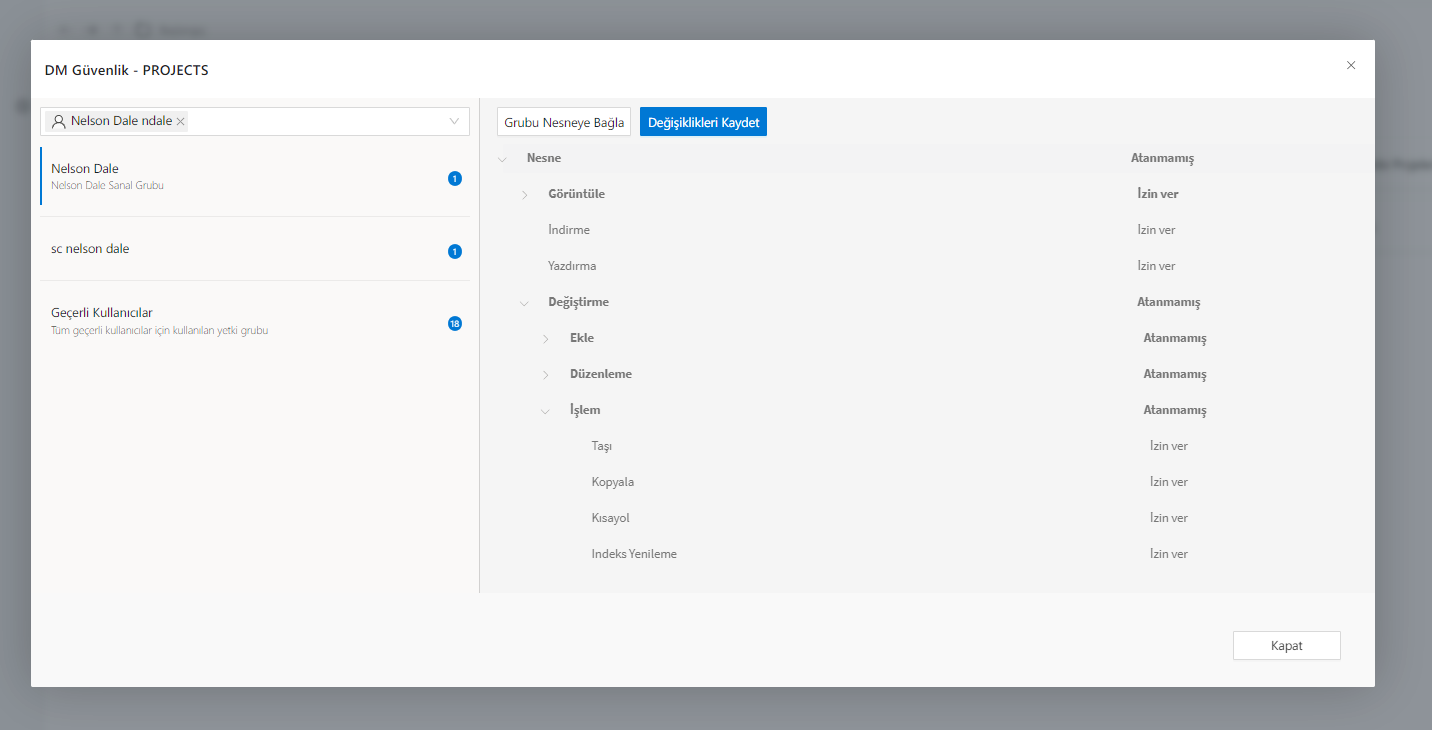
Show Profile: If there is a profile form defined on the folder, it is opened and edited from here.
- Activities: Brings up a panel screen that allows users to broadcast a message on the object and view the messages they have published or the actions they have taken on the object.
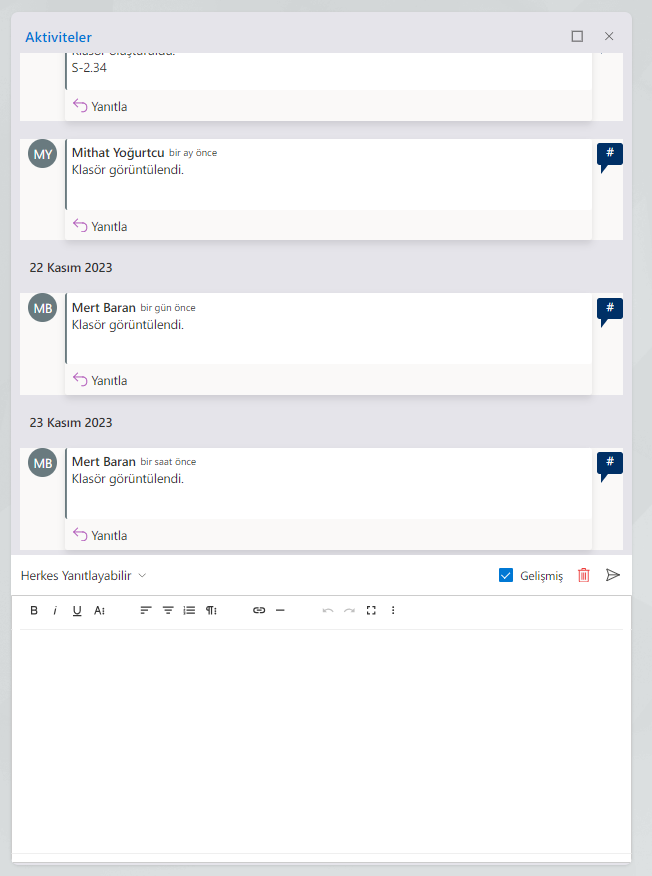
- Activities: Brings up a panel screen that allows users to broadcast a message on the object and view the messages they have published or the actions they have taken on the object.
-Processes:
- Add to Favorites: By clicking this button, the user can add the relevant folder to their favorites. Favorites can be accessed via the breakdown on the left.

- Move: This is the part where the selected folder can be moved to a different directory on Document Management.

- Refresh Index: A re-indexing will be started at the database level for the selected Folder and the information of the relevant folder will be updated more quickly in the index report.
- Rename: This is the area where the name of the selected Folder is changed.
- Delete: This is the feature that allows the selected folders to be deleted. When this button is clicked, the user who performs the operation is expected to perform the operation by entering the folder name for security purposes.
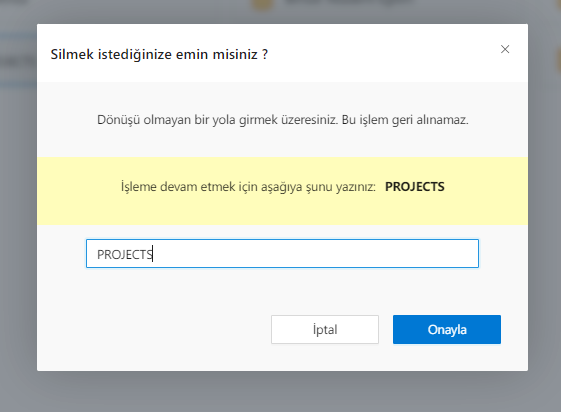
-Share:
- **Subscription**: It is a notification system for files or folders created and/or deleted within the selected Folder.
Information about the folder's name, path, date of creation/editing, and the person who created it can be found here. A notification is selected that will be valid for the specified date ranges. Under Notification Options, it is selected which types of actions the subscriber user will be notified of in the selected Folder. When any file or folder is created and/or deleted, an e-mail is sent informing the subscribed user.
